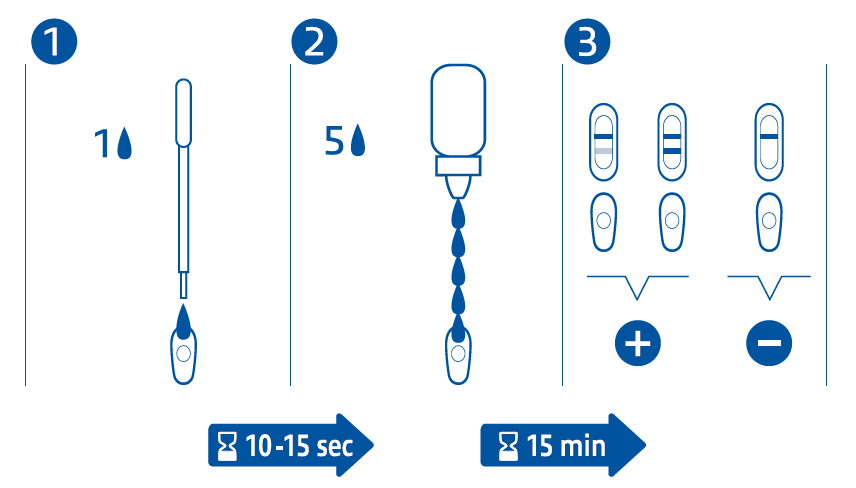Speed Leish K
Rapid detection of anti-Leishmania infantum kinesin antibodies
| Presentation | Advantages | |
|---|---|---|
|
Method: Membrane Immunochromatography Analysis: Detection of anti-Leishmania infantum kinesin antibodies Sample: Whole blood with anticoagulant, serum, plasma Preparation: 2 minutes Reading: 15 minutes Storage: 24 months at room temperature (2°C to 30°C) Presentations: 6 tests, 20 tests Reliability: Compared with the reference method, indirect immunofluorescence: |
|
| Why to use Speed Leish K ? |
|---|
|
Depending on the region, seroprevalence in dogs varies and may reach even 50%. In endemic areas, as the Mediterranean basin, 25 to 30% of carriers are asymptomatic (3). The detection of circulating anti-kinesin antibodies ensures optimal sensitivity and specificity (4). |
| When to use Speed Leish K ? |
|---|
|
In case of indicative clinical signs, Speed Leish K can be used to support the etiological diagnosis. In endemic areas, the regular use of Speed Leish K is strongly recommended to enable early detection of exposure or infection in asymptomatic dogs (3). Dogs that have visited endemic areas should be tested with Speed Leish K for a potential seroconversion. |
Instructions for use
Bibliography:
(1 )CHENE J. et coll. – Comparison of a rapid immunochromatographic test with immunofluorescence assay for the detection of anti-Leishmania infantum antibodies in dogs. 2nd Congresso Internazionale SCIVAC sulla Leismaniosi canina. Pisa – Italy, April 2010
(2) SOLANO GALLEGO L. et coll. Directions for the diagnosis, clinical staging, treatment and prevention of canine leishmaniosis. Vet. Parasitol, 2009 ; 165 : 1-18
(3) TROTZ-WILLIAMS L.A., TREES A.J. Systematic review of the distribution of the major vector-borne parasitic infections in dogs and cats in Europe. Vet Record, 2003, 152, 97-105
(4) BOARINO A. et coll. Development of a recombinant chimeric antigen expression dominant B epitopes of Leishmania infantum for serodiagnosis of visceral leishmaniasis. Clin. Diagn. Lab. Immunol. ; 12 : 647 - 653


 Canine leishmaniosis is a vector-borne disease, transmitted by the bite of an infected sand fly. After infection, the animal may remain apparently healthy for several months or even years before developing clinicalymptoms (weight loss, skin lesions, lymphadenopathy, epistaxis, conjunctivitis, renal dysfunction, haematological abnormalities etc...) (2)
Canine leishmaniosis is a vector-borne disease, transmitted by the bite of an infected sand fly. After infection, the animal may remain apparently healthy for several months or even years before developing clinicalymptoms (weight loss, skin lesions, lymphadenopathy, epistaxis, conjunctivitis, renal dysfunction, haematological abnormalities etc...) (2)